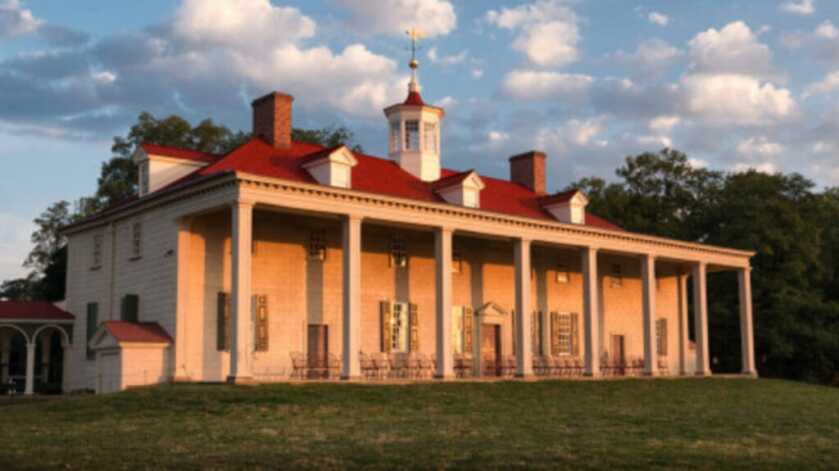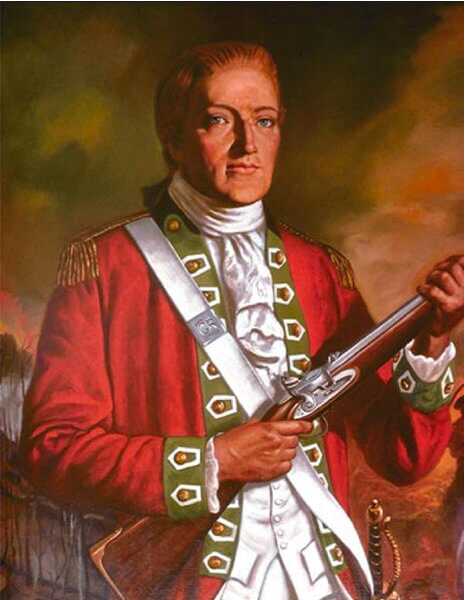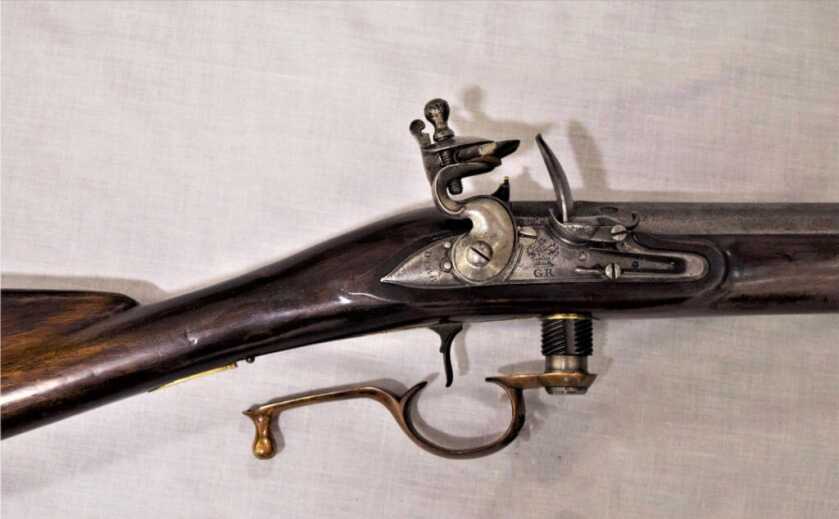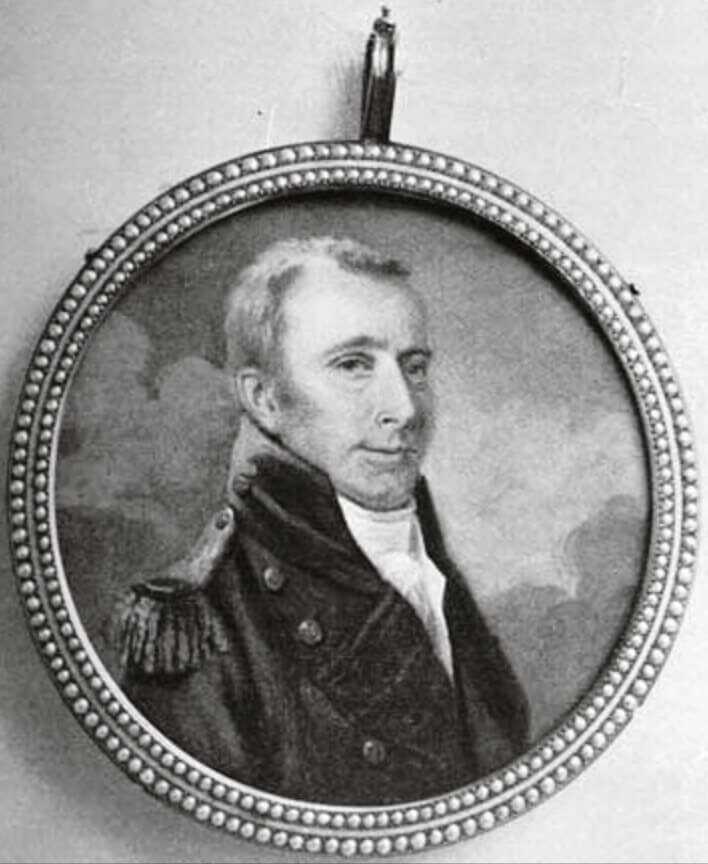
Estimated reading time: 15 minutes
George Washington came screaming into the world in 1732 in Westmoreland County in the then-British colony of Virginia. George was the eldest of six children born to Augustine and Mary Ball Washington. George’s great-grandfather John emigrated to Virginia from England in 1656.

Table of contents
- George and Lawrence
- George Washington Starts His Military Career
- Serving The British
- The Gathering Storm
- The Various Dealings of George Washington
- READ MORE: When the King of England Tried to Kill an American President, Kind of…
- The Main Event
- Washington Comes Out On Top
- The Rest of George’s Story
- George Washington Nears The End
- What May Have Happened
Augustine was a justice of the peace who had four children from a previous marriage. Their family holdings included some 5,000 acres that produced predominantly tobacco. Upon Augustine’s death, a portion of the family estate was transferred to George’s older half-brother Lawrence, who named it Mount Vernon. At age 17, George’s first taste of public service was as the official surveyor for Culpeper County, Virginia.

George and Lawrence
In 1751 Lawrence contracted tuberculosis. That’s tough to get rid of nowadays. It was massively worse back in the 18th century. George accompanied Lawrence to Barbados in hopes that the tropical air might help with his breathing. This was his sole trip outside the country. During this voyage, George contracted smallpox. He obviously survived the disease, but the ordeal left his face scarred.

Lawrence died in 1752. By then George’s personal holdings included 2,315 acres of prime Virginia land. When Lawrence’s widow passed in 1761 George inherited Mount Vernon as well.

George Washington Starts His Military Career
In 1752 the lieutenant governor of Virginia appointed George Washington a Major in the local militia. As a former Army officer myself I find it somewhat disappointing that General Washington never got the pleasure of serving as a second lieutenant in a platoon someplace. In 1753 Washington was dispatched to demand that French forces abandon positions claimed by the British. Along the way, he parlayed with the Iroquois Confederation. The half-chief Tanacharison bestowed upon the militia officer the nickname Conotocaurius which loosely translates to “Devourer of Villages.” It seemed young George Washington’s reputation was on the rise.

While serving under British General Edward Braddock near modern-day Pittsburgh, Washington’s troops were soundly trounced by a combined force of Indians and French Canadians. General Braddock was killed in action, and Washington was twice unhorsed. Washington afterward discovered four musket ball holes shot through his coat.

Serving The British
For most of a decade, George Washington served the British crown in the French and Indian War. By 1762 he was a brevet Brigadier General commanding a brigade. By the time he left the military and returned to Mount Vernon, he had developed keen insights into British military tactics. This experience would pay great dividends down the road.

At age 26 Washington married the widow Martha Dandridge Custis. In so doing he inherited a one-third interest in another 18,000 acres. Their marriage was by all accounts a happy one. Together they raised two children from Martha’s previous marriage and two subsequent grandchildren. George and Martha never had kids together. It has been speculated that George’s smallpox might have rendered him sterile.

If I’m counting correctly, by 1770 Washington owned around 50,000 acres of land. At six feet two inches tall, George Washington was also an exceptionally large man for his day. This formidable physical presence combined with his extensive land holdings and honorable military service set him up for a meteoric political career. However, throughout it all he remained devoted to Martha. In 1773 his stepdaughter Patsy had a seizure and died in his arms. Washington subsequently canceled his business engagements and remained at Martha’s side for three months.
The Gathering Storm

In the 1770’s the British became intolerably overbearing toward their American colonists. Anyone who has had American History in High School or watched Schoolhouse Rock! during Saturday morning cartoons knows the story. The Revolutionary War started with the Battles of Lexington and Concord in April 1775. When Washington was informed that war had begun he was reportedly “sobered and dismayed.” By early May he was part of the Second Continental Congress.

Congress voted to form the Continental Army on June 14, 1775. John and Sam Adams immediately nominated Washington as its commander-in-chief. He beat out John Hancock for the job. Congress elected him unanimously the following day.

The day after that Washington addressed the Congress for the first time in uniform. He declined to take a paycheck and was respected as a man who could keep his personal ambition in check. In short order, Washington had appointed his staff officers and begun organizing his Army.

The Various Dealings of George Washington
Washington initially forbade the use of blacks as soldiers. Seeing an opportunity for exploitation, the British offered freedom to any enslaved persons willing to fight for the crown. Washington subsequently rescinded his prohibition. By the war’s end, fully ten percent of his soldiers were of African descent. When the war was finally over Washington engaged the Treaty of Paris that returned his black soldiers to servitude.

READ MORE: When the King of England Tried to Kill an American President, Kind of…
Washington’s crossing of the Delaware has been memorialized in art. However, this was one seriously squirrely military operation. Enormous chunks of floating ice made the voyage particularly perilous. Of the three long boats that set out on the crossing only Washington’s survived. Two Continental soldiers who actually made it through the crossing stopped to rest on the far side and were found frozen to death the following morning.
The Main Event

The Scotsman Captain Patrick Ferguson was purported to be the finest shot in the British Army. The remarkable precision rifle he wielded was his own creation and bore his name. On September 11, 1777, CPT Ferguson and three of his fellow sharpshooters crouched in the underbrush along Brandywine Creek looking for trouble.

The Ferguson rifle was lightyears ahead of its time. A rapid-fire breechloading rifled design in an era of muzzleloading smoothbores, the Ferguson would have changed the way wars were fought had it not been so expensive and susceptible to fouling. In the hands of its 33-year-old inventor, however, the Ferguson rifle was pure death.
Available on GunsAmerica Now

The first mounted rebel officer was adorned in the colorful mufti of a European Hussar. His compatriot also on horseback was an American in a tall-cocked hat. Ferguson dispatched his three comrades to snipe the pair of officers from concealment but then thought better of it. He felt that shooting men from their horses in ambush was ungentlemanly. Ferguson stayed his marksmen and shouted at the tall distinguished American.

George Washington looked in his direction but still remained oblivious to the deadly threat that was nearby. Ferguson leveled his own rifle but thought better of shooting a man in the back as he cantered away. The British rifleman later said, “I could have lodged half a dozen balls in or about him, before he was out of my reach, but it was not pleasant to fire at the back of an unoffending individual, who was acquitting himself very coolly of his duty—so I let him alone.”

Washington Comes Out On Top
General Washington lost the Battle of Brandywine Creek but ultimately won the war. The day after this episode an American ball shattered CPT Ferguson’s right elbow. While he recovered he taught himself to fight and write left-handed. Some while later on a night operation he caught a friendly British bayonet in his left arm. He remained in the fight by managing his horse’s reins with his teeth.

Ferguson was the master of the unconventional fight, terrorizing patriot families across Virginia and the Carolinas. In late September 1780, Ferguson was overrun and killed at Kings Mountain while commanding some 1,000 Tory troops. The world will never know what might have come of it had Ferguson not held his fire that fateful day along Brandywine Creek.
The Rest of George’s Story

George Washington contracted and survived diphtheria, smallpox, dysentery, pneumonia, tuberculosis, and malaria during his 67 years. By the time he was inaugurated in 1789, Washington had only one original operational tooth. Contrary to legend, his various dentures were made from both animal and human teeth but never wood. Over the course of his lifetime, Washington owned some 577 slaves. He freed one, William Lee, upon his death and stipulated that another 123 be freed upon his wife’s passing. Martha actually granted these slaves their freedom before she died just to remove their incentive to kill her.

On December 12, 1799, George Washington took a tour of his estate on horseback. He came home late and entertained guests who described him as cheerful. Later that evening he complained of chest congestion but little else. The following morning he had a terrific sore throat and difficulty breathing.

George Washington Nears The End
Three physicians were summoned who proceeded to drain five pints of blood from the poor man. Bloodletting was the medical solution to most anything back then. One of his doctors considered a tracheotomy, but the other two dissuaded him. Washington purportedly told his primary physician, “Doctor, I die hard, but I’m not afraid to go.”

Near the end, Washington left instructions with Tobias Lear, his personal secretary, that they wait three days before burying him to ensure he wasn’t entombed alive. Late in the evening on the 14th with Martha at the foot of his bed, George Washington breathed his last. His final words were, “Tis well.”

What May Have Happened
Washington’s medical malady sounds like epiglottitis to me. Epiglottitis is a wretched condition wherein the epiglottis, that little dangly thing in the back of your throat, gets severely inflamed. This can get so bad it interferes with respiration. Having five units of blood removed likely didn’t do much to help the situation.

George Washington was a flawed man, as are we all, but he had an undeniably charmed life. He was the right man at the right time to birth the greatest nation the world has ever seen. Even the most jaded observer can see the forces of Divine Providence at work throughout.
*** Buy and Sell on GunsAmerica! ***












The revolutionary war actually started because the British colonist were taking land from the French, which in turn started the French British war. The British started leveling taxes against the colonies because they were the ones that started the war and they thought they should help pay for it. It wasn’t taxation without representation.
“While serving under British General Edward Braddock near modern-day Pittsburgh, Washington’s troops were soundly trounced by a combined force of Indians and French Canadians.”
There is quite the story behind the defeat near Pittsburgh. Braddock and his troops cut a swath through virgin forest in order to attack the French at Pittsburgh, where, as stated, they were trounced. The British forces hastily retreated, but French regular troops caught up with therm at a place that is now in West Virginia, close to the Maryland border. In the course of the night, the British cut down young white oaks and built a fortification, no more than 10′ x 10′, along with a defensive ditch around it. It was named Fort Necessity. After a skirmish in the morning, The French called for the British to surrender. With musket balls easily penetrating the thin walls of the “fort,” Washington (who was in command after Braddock’s death) had no choice but to do so. The British troops were disarmed and sent scurrying back to British territory. The place of this small battle is now a state park with a reconstruction of the fort on the original site, and living history demonstrations.